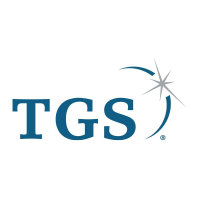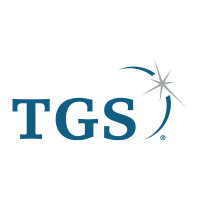
TGS ASA
OSE:TGS


| US |

|
Johnson & Johnson
NYSE:JNJ
|
Pharmaceuticals
|
| US |

|
Berkshire Hathaway Inc
NYSE:BRK.A
|
Financial Services
|
| US |

|
Bank of America Corp
NYSE:BAC
|
Banking
|
| US |

|
Mastercard Inc
NYSE:MA
|
Technology
|
| US |

|
UnitedHealth Group Inc
NYSE:UNH
|
Health Care
|
| US |

|
Exxon Mobil Corp
NYSE:XOM
|
Energy
|
| US |

|
Pfizer Inc
NYSE:PFE
|
Pharmaceuticals
|
| US |

|
Palantir Technologies Inc
NYSE:PLTR
|
Technology
|
| US |

|
Nike Inc
NYSE:NKE
|
Textiles, Apparel & Luxury Goods
|
| US |

|
Visa Inc
NYSE:V
|
Technology
|
| CN |

|
Alibaba Group Holding Ltd
NYSE:BABA
|
Retail
|
| US |

|
3M Co
NYSE:MMM
|
Industrial Conglomerates
|
| US |

|
JPMorgan Chase & Co
NYSE:JPM
|
Banking
|
| US |

|
Coca-Cola Co
NYSE:KO
|
Beverages
|
| US |

|
Walmart Inc
NYSE:WMT
|
Retail
|
| US |

|
Verizon Communications Inc
NYSE:VZ
|
Telecommunication
|
Utilize notes to systematically review your investment decisions. By reflecting on past outcomes, you can discern effective strategies and identify those that underperformed. This continuous feedback loop enables you to adapt and refine your approach, optimizing for future success.
Each note serves as a learning point, offering insights into your decision-making processes. Over time, you'll accumulate a personalized database of knowledge, enhancing your ability to make informed decisions quickly and effectively.
With a comprehensive record of your investment history at your fingertips, you can compare current opportunities against past experiences. This not only bolsters your confidence but also ensures that each decision is grounded in a well-documented rationale.
Do you really want to delete this note?
This action cannot be undone.

| 52 Week Range |
95.75
137.2498
|
| Price Target |
|
We'll email you a reminder when the closing price reaches NOK.
Choose the stock you wish to monitor with a price alert.

|
Johnson & Johnson
NYSE:JNJ
|
US |

|
Berkshire Hathaway Inc
NYSE:BRK.A
|
US |

|
Bank of America Corp
NYSE:BAC
|
US |

|
Mastercard Inc
NYSE:MA
|
US |

|
UnitedHealth Group Inc
NYSE:UNH
|
US |

|
Exxon Mobil Corp
NYSE:XOM
|
US |

|
Pfizer Inc
NYSE:PFE
|
US |

|
Palantir Technologies Inc
NYSE:PLTR
|
US |

|
Nike Inc
NYSE:NKE
|
US |

|
Visa Inc
NYSE:V
|
US |

|
Alibaba Group Holding Ltd
NYSE:BABA
|
CN |

|
3M Co
NYSE:MMM
|
US |

|
JPMorgan Chase & Co
NYSE:JPM
|
US |

|
Coca-Cola Co
NYSE:KO
|
US |

|
Walmart Inc
NYSE:WMT
|
US |

|
Verizon Communications Inc
NYSE:VZ
|
US |
This alert will be permanently deleted.
 TGS ASA
TGS ASA
TGS ASA
Investor Relations
TGS ASA has carved a distinct niche for itself in the dynamic world of geoscience data and intelligence, offering a compelling narrative of resilience and adaptability. Established initially as an entity focused on seismic data acquisition, TGS has effectively expanded its portfolio to include a diverse range of geophysical and geological data. This evolution underscores its commitment to catering to the intricate demands of the oil and gas exploration sector. The company gathers, interprets, and licenses seismic data, serving as a vital resource for exploration and production companies looking to accurately assess potential hydrocarbon reserves. Its robust data library, one of the industry's most comprehensive, allows clients to access essential geological and geophysical data, reducing exploration risk and improving the efficiency of resource extraction.
Revenue generation for TGS hinges significantly on its multi-client business model, where seismic and geoscience data are pre-funded by a consortium of oil and gas companies and then licensed on a non-exclusive basis to other industry players. This model enables TGS to mitigate risk and align its resources effectively, ensuring that the data it collects and processes is both pertinent and timely for its clientele. Alongside seismic data, TGS has embraced technological advancements, offering data insight solutions and integrating machine learning and artificial intelligence techniques to further enhance decision-making capabilities in exploration activities. Through these strategic initiatives, TGS not only maintains a strong market presence but also positions itself as an innovative leader in providing critical data intelligence across the energy sector.

TGS ASA has carved a distinct niche for itself in the dynamic world of geoscience data and intelligence, offering a compelling narrative of resilience and adaptability. Established initially as an entity focused on seismic data acquisition, TGS has effectively expanded its portfolio to include a diverse range of geophysical and geological data. This evolution underscores its commitment to catering to the intricate demands of the oil and gas exploration sector. The company gathers, interprets, and licenses seismic data, serving as a vital resource for exploration and production companies looking to accurately assess potential hydrocarbon reserves. Its robust data library, one of the industry's most comprehensive, allows clients to access essential geological and geophysical data, reducing exploration risk and improving the efficiency of resource extraction.
Revenue generation for TGS hinges significantly on its multi-client business model, where seismic and geoscience data are pre-funded by a consortium of oil and gas companies and then licensed on a non-exclusive basis to other industry players. This model enables TGS to mitigate risk and align its resources effectively, ensuring that the data it collects and processes is both pertinent and timely for its clientele. Alongside seismic data, TGS has embraced technological advancements, offering data insight solutions and integrating machine learning and artificial intelligence techniques to further enhance decision-making capabilities in exploration activities. Through these strategic initiatives, TGS not only maintains a strong market presence but also positions itself as an innovative leader in providing critical data intelligence across the energy sector.





























 You don't have any saved screeners yet
You don't have any saved screeners yet
